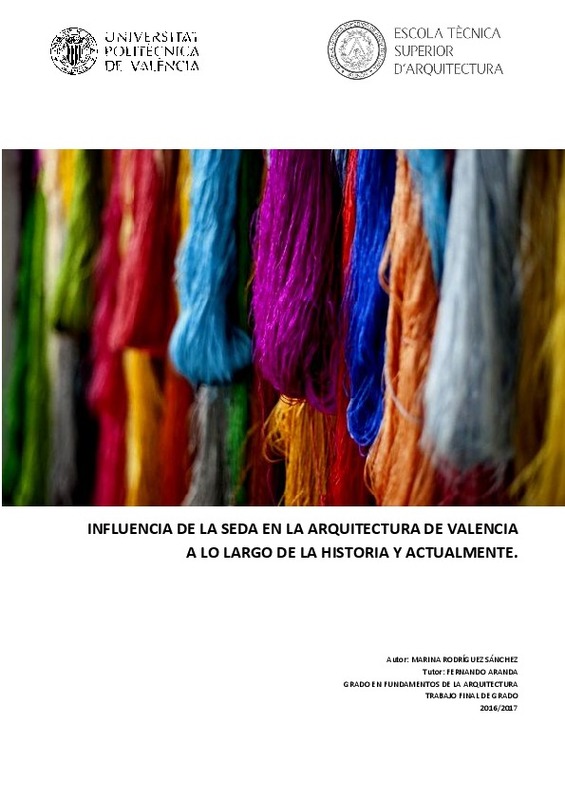|
Resumen:
|
[ES] El origen de la sedería en Valencia es debido a una serie de circunstancias que se producen durante los siglos XIII y XIV lo que deviene en un enriquecimiento de la población que desemboca a que en el siglo XV Valencia ...[+]
[ES] El origen de la sedería en Valencia es debido a una serie de circunstancias que se producen durante los siglos XIII y XIV lo que deviene en un enriquecimiento de la población que desemboca a que en el siglo XV Valencia alcance unos niveles de prestigio en el ámbito europeo convirtiéndola en una urbe cosmopolita, de las más activas del Mediterráneo, abierto a toda clase de visitantes y corrientes culturales. Las arquitecturas góticas son el reflejo del progreso urbano de la ciudad. Y es que el motivo de la construcción de la Lonja es la evidencia histórica del despegue de la industria sedera en la Valencia del siglo XV. La estrecha relación con Italia y el espíritu abierto de Valencia permite que se remplace el caballeresco clasicismo medieval y el Renacimiento penetra en ella.
Si sus habitantes con la indumentaria eran el reflejo de esa prosperidad ya comentada anteriormente, arquitectónicamente Valencia también se vestía por la influencia de la industria sedera. Así la influencia en la arquitectura no será solo una cuestión económica sino que se pueden observar ciertos patrones similares entre la indumentaria y la arquitectura, pues al final ambas son arte.
Actualmente, la fiesta de las Fallas es candidata a ser declarada Patrimonio Inmaterial de la Humanidad por la UNESCO, impulsando esta candidatura se encuentra el proyecto donde cultura, fiestas y tradiciones, patrimonio y turismo se dan la mano, "Valencia Ciudad de la Seda 2016", descansa sobre dos pilares esenciales, los dos edificios emblemáticos vinculados a la Seda, La Lonja de la Seda y el Colegio del Arte Mayor de la Seda.
[-]
[EN] The origin of the silks in Valencia is due to a series of circumstances that produce to themselves during the XIIIth and XIVth century what develops into an enrichment of the population who ends to that in the 15th ...[+]
[EN] The origin of the silks in Valencia is due to a series of circumstances that produce to themselves during the XIIIth and XIVth century what develops into an enrichment of the population who ends to that in the 15th century Valencia reaches a few levels of prestige in the European area turning her into a cosmopolitan city, one of the most active of the Mediterranean, opened for all kinds of visitors and cultural currents. The Gothic architectures are the reflection of the urban progress of the city. And the motive of the Lonja's construction is the historical evidence of the takeoff of the silk industry in the Valencia XVth. The narrow relation with Italy and the spirit opened of Valencia allows that remplace the chivalrous medieval classicism and the Renaissance penetrates in her.
If its habitants with the costumes were the reflection of this prosperity already commented previously, architectonically Valencia also was dressing for the influence of the silk industry. This way the influence in the architecture will not be just one economic question but certain similar bosses can be observed between the costumes and the architecture, finally both are an art.
Nowadays, Fallas is candidate to Immaterial Heritage of the Humanity being declared by the UNESCO, stimulating this candidature one finds the project where culture, holidays and traditions, heritage and tourism give themselves the hand, "Valencia City of her Sedates 2016", it rests on two essential pillars, both emblematic buildings linked to Silk, la Lonja de la Seda and el Colegio del Arte Mayor de la Seda.
[-]
|







